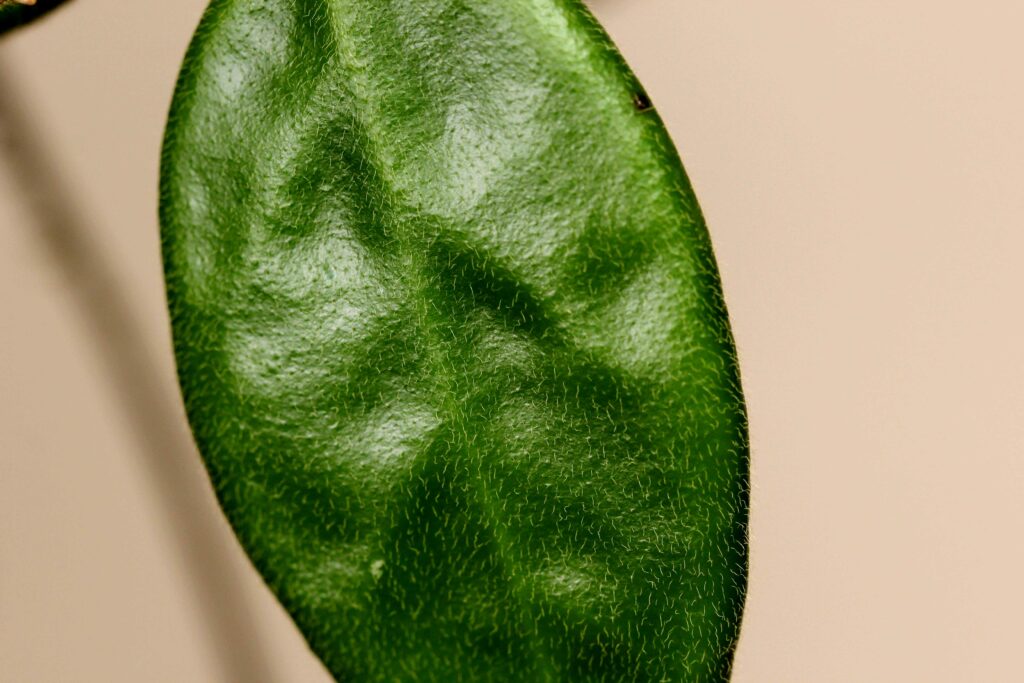Here is my post from July 27, 2020: “I can’t even pronounce this one, let alone flower it. Another four year old Hoya that will periodically produce peduncles, but has never ever tried to bud up. I pretty much have given up on this one. I keep it around, but will in all likelihood never bloom it.” Well, here we are in March of 2022, and I can finally say that I got this monkey off my back. Hoya vangviengiensis has now been flowered.
I just looked back and it took me less time than I initially thought to flower Hoya vangviengiensis. I got the plant as a cutting in September of 2017, where it quickly rooted and grew well enough to have to up-pot it a few times over the first year or so. I was tremendously excited when it got its first peduncle, but this is one of those Hoyas that a peduncle means absolutely nothing. It probably got a couple of dozen over the years but never budded up.
I had many stops and starts with this plant over the years. It would go months at a time without any growth at all. I suspect that there is some root rot that has gone on with it at times, as it is in far too large of a pot, which I am trying to move away from. I will go into extensive detail about how it lives in nature, and apparently it is totally epiphytic in its endemic habitat so the large pot had to be detrimental to it.
I had tried most tricks over time to get it to flower including different fertilizers, day length changes, putting it outside in the greenhouse during the summer. I tried different types of grow lights and nothing seemed to do the trick to make this one bud up. Finally I noticed a peduncle starting to form tiny buds in late December of 2021; it took me quite a long time to really believe it was finally happening, but it made steady progress and the blooms finally opened up in Mid-February, 2022.
Hoya vangviengiensis flowers are powerfully scented and last over a week. They drip small amounts of nectar. Here are the conditions under which it flowered. The night time temperatures would dip down to as low as 57 degrees Fahrenheit with day time highs reaching about 72 degrees. The day cycle was 12 hours of a strong LED light made by Mars Hydro with a manufacture date of 2021. I watered very sparingly, keeping it far drier than in previous years. Humidity was always high never going below 70% except when I opened the tent door. I fertilized lightly every time I watered.
Hoya vangviengiensis is name for the location where it was first found in Vang Vieng, Laos in 2010. In 2015 was also discovered in Yunnan Province, China; it was grown out and confirmed to be the same species in 2017. It, like Hoya carnosa, has clear sap. According to Rodda & Simonsson who published the species, Hoya vangviengiensis has only been found growing epiphytically, mostly on smaller moss covered branches. It is found in shaded limestone areas where it is provided with mostly cool humid conditions year round. This is a species that is found close to the northern limits for Hoyas and as such can survive some pretty cool temperatures.
I feel very privileged to have flowered Hoya vangviengiensis and don’t expect to be able to do it again in the future. It loves cool, humid conditions and as such does not make a very good houseplant here in the Northeast because of the dry air in our centrally heated houses in the winter time. I have tried growing it on a windowsill during the winter and it shuts down completely without the humidity. For someone wanting a challenge, or who lives in a naturally cool, humid area like, say San Francisco, I can highly recommend the plant!












